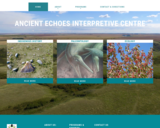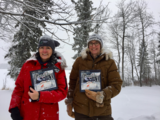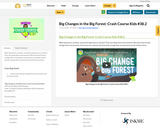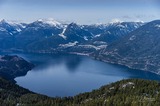ANCIENT ECHOES INTERPRETIVE CENTRE is nestled at the junction of the Coalmine Ravine and the Eagle Creek and offers both indoor and outdoor tours of our Palaeontology sites (dinosaur and fossil displays and dig), Prairie Grasslands Ecology (virgin prairie medicine and food plants, animals in the wild and taxidermy displays), and First Nations History (petroglyphs, rock formations, effigies, archaeological dig, teepee rings, buffalo jump, food processing site, tool artifacts and pottery making displays). A permanent art exhibition by Metis artist, Jo Cooper, expresses a visual and oral story with “The Disappearance and Resurgence of the Buffalo”. Additionally, sculptures outside the centre stimulate the imagination as well as humour.
Ancient Echoes is currently operating under their summer hours, which run from May 7th to August 31st. This means we are open Tuesdays-Sundays from 9:00 AM - 5:00 PM (closed Mondays). Bookings can be made by calling the Centre at 1-306-377-2045 or emailing anciente@sasktel.net. Our Valley View Tea Room is open every Friday from 2:30-4:30 PM in May-August.
Ancient Echoes is a popular site for School Tours throughout the year offering custom-designed programs for students of all ages in the areas of Aboriginal History, Paleontology, Ecology, and Archaeology.
Ancient Echoes also offers regular summer programs including traditional pottery making, drum making, ecology and palaeontology hikes, full moon walks, educational and craft days for children, as well as numerous other “ project” days. A video of the ravine walk is available indoors for “rainy days”, or for those who do not wish to hike.
Ancient Echoes has just recently added a beautiful art gallery space to their walls. Our new Prairie Echoes Gallery offers numerous exhibits throughout the year of new and established artists and photographers.








